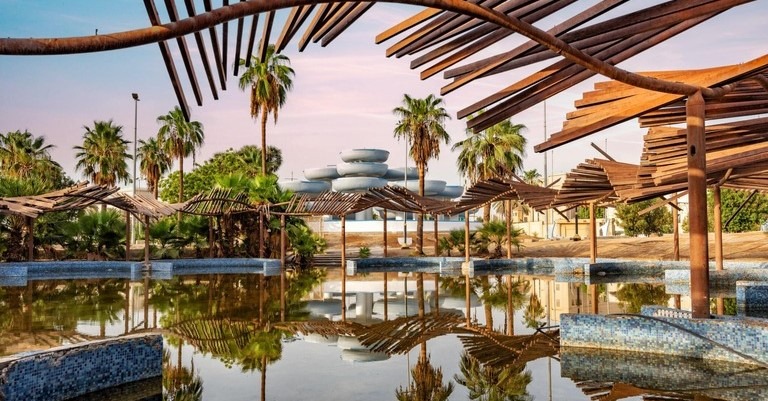Saudi Arabian real estate is a dynamic and rapidly evolving sector encompassing various property markets and real estate sectors. The kingdom features distinct regional real estate market landscapes, reflecting diverse economic and cultural influences. These markets encompass residential, commercial, and industrial sectors, each contributing to the overall vibrancy of Saudi Arabia’s real estate sector.
Riyadh Real Estate:
The Riyadh property market, as the capital of Saudi Arabia, stands as a pivotal hub for real estate activities. Real estate in Riyadh is marked by continuous growth, offering a spectrum of housing options and showcasing innovative property developments. From residential complexes to commercial spaces, Riyadh’s real estate landscape reflects the city’s dynamic economic and cultural evolution.
Jeddah Real Estate:
Jeddah, the vibrant coastal city, presents its unique real estate dynamics. The Jeddah property market is characterized by a diverse range of real estate, including luxurious waterfront residences and modern commercial spaces. Jeddah’s housing options and property developments align with its cosmopolitan identity, making it a distinctive player in the Saudi Arabian real estate scene.
Regional Differences in Real Estate:
The comparison between Riyadh and Jeddah real estate reveals intriguing regional variations. Riyadh vs. Jeddah real estate highlights disparities in market dynamics, property variations, and geographic influences. Understanding these regional differences is essential for investors and developers seeking to navigate and capitalize on the diverse real estate opportunities across the kingdom.
Residential Real Estate:
Residential properties constitute a significant segment of the Saudi Arabian real estate market. Housing markets in Riyadh and Jeddah witness trends in residential real estate that cater to varying preferences and demographics. The development of residential properties plays a pivotal role in shaping the urban landscapes of both cities.
Commercial Real Estate:
Commercial real estate in Riyadh and Jeddah encompasses a spectrum of properties, including office spaces and retail establishments. The commercial property market reflects the economic vitality of these cities, with trends in office spaces, retail real estate, and other commercial developments contributing to the overall growth and dynamism of the Saudi Arabian real estate sector.
Investment Opportunities:
Real estate investment opportunities abound in both Riyadh and Jeddah. Investors can explore the investment potential in Riyadh and Jeddah, by adopting strategic property investment strategies. Opportunities in different regions provide a diverse portfolio for investors looking to capitalize on the Kingdom’s growing real estate market. Some of the interesting facts are provided below:
- 1. The Saudi Arabian real estate market was expected to be worth 161.3 billion US dollars in 2023, according to Statista. Presently, it is producing 9.4% of the non-oil gross domestic product of the kingdoms.
- 2. According to JLL MENA, efforts to draw in international corporations and loosen up rules will probably have a favorable medium-to-long-term effect on the demand for commercial office space. The Royal Commission for Riyadh declared earlier this year that it aimed to bring in 500 international corporations to establish regional headquarters in Riyadh within the next ten years.
- 3. The size of the Saudi Arabian real estate market is anticipated to increase at a compound annual growth rate (CAGR) of 7.89% from USD 64.43 billion in 2023 to USD 94.19 billion by 2028, according to Mordor Intelligence. Throughout the final quarter of 2022, Saudi Arabia’s office sector statistics and occupier demand remained robust.
- 4. According to JLL MENA, Saudi Arabia’s unemployment rate dropped to 4.9% in the second quarter of 2023. Grade A rates in Riyadh increased by 12.9% to SAR 1,900 per square meter.
- 5. Al Taasis states that there are various segments within the Saudi Arabian real estate industry, which include: The largest segment of the real estate market is residential, making up around 70% of all homes. Commercial buildings make up the remaining 20% or so.
Infrastructure Development:
The development of infrastructure in Riyadh and Jeddah significantly influences the real estate sector. Transportation projects and urban development initiatives play a pivotal role in shaping the impact of infrastructure on real estate. The interplay between infrastructure development and property markets underscores the importance of considering these factors in real estate planning.
Cultural and Economic Influences:
Cultural factors and economic influences exert a profound impact on real estate markets in Riyadh and Jeddah. Economic growth, cultural preferences, and socioeconomic factors shape the development of properties in these cities. Recognizing the interplay between cultural and economic influences is crucial for stakeholders in the real estate sector.
Government Initiatives:
Government policies in real estate, including development plans and housing initiatives, shape the regulatory landscape. Riyadh and Jeddah’s development plans align with broader government initiatives, and Vision 2030 plays a significant role in influencing the real estate sector. Understanding the impact of government support is essential for industry participants.
Market Trends and Dynamics:
Current real estate trends and market dynamics in Riyadh and Jeddah provide insights into the evolving nature of the property markets. Emerging trends in property markets, including shifts in demand and supply, contribute to the dynamic nature of the real estate sector in both cities.
Population Growth and Demographics:
Population growth and demographic trends influence real estate considerations in Riyadh and Jeddah. Understanding urbanization effects and demographic considerations helps stakeholders make informed decisions about property development, catering to the evolving needs of diverse populations.
Real Estate Challenges:
Challenges in Riyadh and Jeddah real estate encompass various obstacles, from market dynamics to regulatory challenges. Recognizing and addressing these challenges is essential for navigating the complexities of property development and investment in these cities.
Luxury Real Estate:
Luxury properties in Riyadh and Jeddah form a distinct segment of the real estate market. High-end real estate offerings and luxury market trends contribute to the exclusivity and sophistication of the property landscape in these cities.
Affordable Housing:
Addressing the need for affordable housing is a critical aspect of real estate development in Riyadh and Jeddah. Initiatives for affordable housing and the availability of affordable properties underscore the commitment to providing diverse housing options for residents.
Real Estate Market Sustainability:
Sustainable real estate practices in Riyadh and Jeddah reflect an increased awareness of environmental considerations. Eco-friendly developments and green real estate initiatives underscore the commitment to environmental sustainability in property markets.
Market Comparisons:
Comparative analysis of Riyadh and Jeddah real estate offers valuable insights into the differences and similarities between these two major cities. Market disparities, regional property variations, and contrasts in real estate development contribute to a comprehensive understanding of the Saudi Arabian real estate landscape.
Future Prospects:
The future of Riyadh and Jeddah real estate holds promising opportunities and anticipated trends. Emerging opportunities and long-term prospects for property markets provide a foundation for strategic planning and investment in these dynamic cities.
Real Estate Investment Strategies:
Investment strategies in Riyadh and Jeddah involve considerations of property portfolio management, diversification, and risk assessment. Tailoring investment strategies to the unique dynamics of each city is crucial for optimizing returns and managing risks.
Real Estate Technology:
Technological advancements in real estate, including PropTech in Riyadh and Jeddah, are transforming the industry. Smart real estate developments and digital transformation initiatives contribute to the integration of technology in property markets, enhancing efficiency and user experience.
In conclusion, the real estate markets in Riyadh and Jeddah, Saudi Arabia, present a dynamic tapestry of opportunities and challenges. From the bustling commercial developments to the evolving landscape of residential properties, both cities showcase unique characteristics shaped by cultural, economic, and governmental influences. Recognizing the regional disparities, addressing affordability concerns, and embracing sustainability are pivotal steps for the continued growth of these markets. As both Riyadh and Jeddah navigate the future with ambitious infrastructure projects and government initiatives, stakeholders must adopt strategic investment approaches that consider the distinct trends and dynamics of each city to capitalize on the diverse potential offered by the Saudi Arabian real estate sector.






